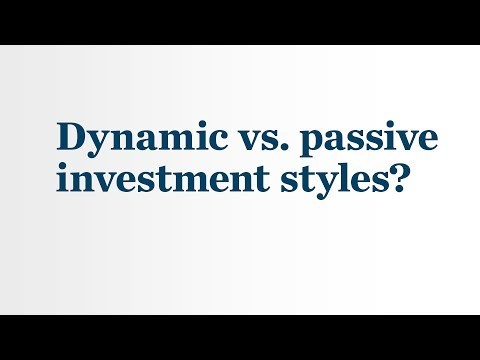Alternative Assets for the Masses
Post on: 9 Апрель, 2015 No Comment

Institutional investors have long used private equity and hedge funds to achieve overall returns far higher than those eked out by individuals. In the 10 years ended Dec. 31, 2008, Hedge Fund Research’s Fund Weighted Composite Index gained 7% per year, on average, while the Thomson Reuters U.S. Private Equity Performance Index returned an annual average of 17%. That compares with a 13% cumulative loss for the Standard & Poor’s (MHP) 500-stock index.
Until recently the masses lacked easy access to these asset classes. Over the past year, however, the number of products that offer individual investors ways to invest in alternative assets has swelled. Should individuals jump in now that they have the chance?
Alternative investment vehicles weren’t immune to 2008’s market crisis: A record-setting 1,471 hedge funds closed in 2008, and 858 shut their doors in the first three quarters of 2009. Total assets shrank by more than $300 billion, to $1.5 trillion, according to Chicago-based Hedge Fund Research. And private equity funds raised $187 billion through Sept. 30, 2009, significantly less than the $478 billion collected in the same period a year earlier, according to London-based researcher Preqin.
Rob Kaimowitz, CEO of Bull Path Capital Management in New York, converted his hedge fund into a mutual fund, the Bull Path Long Short, in early 2009 after seeing what he describes as a huge opportunity in the retail space. Most investors, he says, only own long funds, or those consisting of stocks the managers think will go up. Kaimowitz’s fund uses a long-short strategy. We pick the stocks we think will go up and the stocks we believe will go down, which manages risk because you limit your overall market exposure, he says. If the market goes down, you’re capturing part of that.
In addition to short positions, long-short funds can also use leverage and derivatives. Morningstar (MORN) tracks 78 such funds, about a fifth of which were launched since the crisis began. Only three earn the coveted five-star rating: Robeco Long/Short Equity (BPLSX), which in 2009 had gained 78% as of Dec. 14; TFS Market Neutral (TFSMX), up 17%; and Wegener Adaptive Growth (WAGFX), up 39%.
RAISING THE ANTEHedge funds lost an average 19% in 2008. But the global downturn actually increased institutional investors’ appetites for alternatives. According to a survey by Greenwich Associates in June 2009, about a fifth of institutions polled said that despite losses, they plan to increase allocations to hedge funds and private equity. That’s because alternative investments can not only enhance overall return, they also reduce portfolio risk, according to Massachusetts Institute of Technology finance professor Andrew W. Lo, who also manages his own fund. The 2008 decline in hedge funds was much less steep than the S&P 500’s 37% drop, and though hedge fund performance lagged behind U.S. equities in 2009, the asset class has bested the S&P 500 by 18 percentage points since the end of 2007.
Financial markets have gotten quite a bit more complex over the last couple of decades, says Lo. It’s not possible to get diversification through long-only investments. He suggests investors avoid alternative funds that chase performance and choose those that use hedge fund strategies that lower risk. Lo’s Natixis ASG Global Alternatives Fund (GAFAX) is up 5% since launching on Sept. 30, 2008.

Private equity plays for small fry investors are more limited. Individual investors who want in can consider a number of private equity firms that trade publicly, including Blackstone Group (BX) and Onex (ONEXF). But because single-stock bets are risky—Blackstone is down 56% since its June 2007 IPO—investors looking for exposure should probably stick to funds that track listed private equity firms. An ETF from PowerShares, the Global Listed Private Equity Portfolio (PSP), as of Dec. 14 had returned 30% in 2009. Vista Listed Private Equity Plus (LPEAX), an active mutual fund, was up 42%. Steven R. Samson, president of Vista Research & Management in Greenwich, Conn. attributes the fund’s outperformance to its go-anywhere style. We’re constantly scouring the globe for new listings. Broad geographic, industry, and market cap diversification, he says, is a must. But so is buying at the right time. Management began adding Blackstone to the portfolio in early 2009, when shares were trading below 5. Now, at 14, it’s one of the top holdings, says Samson.
Darek Wojnar, head of product strategy and research at iShares, thinks the business of alternative assets is in its adolescence. As retail products proliferate, the asset class will become more user-friendly compared with the hedge funds of old, he says: Why would investors want to invest in vehicles that are expensive, have no transparency, have significant liquidity restrictions, and do not disclose exposure?
Already, JPMorgan (JPM), and Schwab (SCH) are among the big shops offering retail funds. Exchange-traded funds have also popped up, such as iShares Diversified Alternatives Trust (ALT), which has an expense ratio, or the annual cost to investors expressed as a percentage of the total amount they have invested, of 0.95%. A newer player in the fund field, IndexIQ in Rye Brook, N.Y. offers two ETFs that use hedge fund strategies, both priced at 0.75%. But don’t be persuaded by the low fees alone. Lo warns that some ETFs use short positions and are potentially misleading, because they offer short exposure on a daily basis rather than over a period of time. Check with a financial adviser or fund ratings service before buying.
Kalwarski is Numbers department editor at Bloomberg BusinessWeek.














